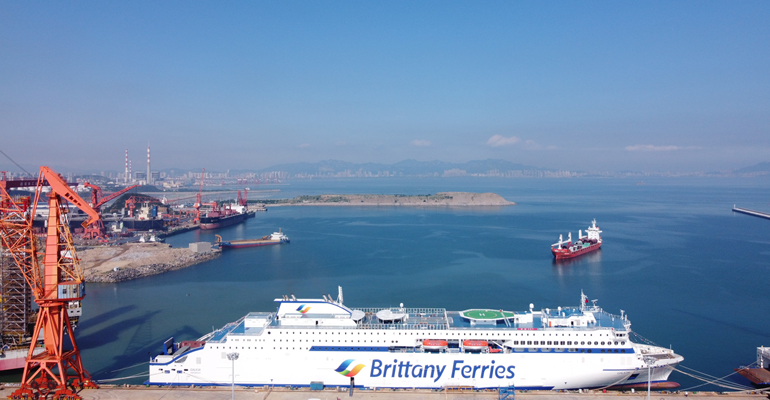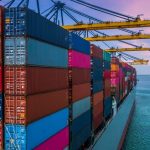Wärtsilä is set to power Stena RoRo’s trio of new hybrid RoPax vessels for Brittany Ferries’ UK-France trade.
Two of the three new vessels will have battery capacities of 11.5MWh, around double that typically used in current hybrid propulsion, and enough to make them the largest hybrid marine vessels to date.
The order for the trio was placed in May 2022 at China Merchants Jinling (Weihai) Shipyard for delivery in 2024 and 2025.
The vessels will be long-term chartered to Brittany Ferries for its Portsmouth to St Malo/Caen routes. Wärtsilä claims the combined benefits of hybrid propulsion and shore power brings up to 15% savings in greenhouse gas emissions compared to conventional diesel mechanical propulsion.
The ships will operate on either LNG or battery power from the Leclanché’s Navius MRS-3 energy storage system, which claims size and weight advantages over comparable marine batteries.
Wärtsilä was already contracted to supply the main and auxiliary engines, gearboxes, controllable pitch propellers (CPPs), thrusters, fuel gas supply system, Nacos navigation and automation as well as integrated control alarm and monitoring systems for the vessels.
Per Westling, Managing Director, Stena RoRo, said: “Stena wants to be a frontrunner in decarbonising our fleet and, together with our partners, pushing developments towards zero emission operations. Hybridisation allows our vessels to be highly flexible as we adapt to future technology developments, including green fuels, fuel cells, bigger batteries, and solar or wind supported propulsion.”
Christophe Mathieu, Brittany Ferries CEO, said: “Hybrid technology continues to move our fleet renewal programme forward and will follow the introduction of two LNG-powered ships. From day one of operation, ports like St Malo in France and Portsmouth in the UK will benefit from these cleaner hybrid vessels. Shore-side power capability means further benefits will be realised, as investment by ports in plug-in infrastructure allows.”
Håkan Agnevall, President & CEO, Wärtsilä , said: “The extensive battery size will allow the vessels to operate with full power, using both propellers and all thrusters to manoeuvre emissions-free in and out of ports, even in bad weather. The built-in shore power solution will charge the batteries while berthed.”
Source: Seatrade Maritime News






